Effect of Cu Content on the Alloy Tensile Properties of Al-Cu Based Alloys Tested at 25 °C and 250 °C: Application of the Concept of Quality Index
Abstract
:1. Introduction
2. Experimental Procedure
- All solution heat treatments (SHT) for the T200 alloys were carried out at 520 °C.
- All solution heat treatments (SHT) for the A319 alloy (coded D alloy) were carried out at 500 °C for only 8 h.
- All solution heat treatments (SHT) for the A356 alloy (coded E alloy) were carried out at 540 °C for only 8 h.
- Water quenching was done using warm water (~60 °C).
3. Results and Discussion
3.1. Microstructural Characterization (Solidification Rate ~0.8 °C/s)
3.2. Tensile Properties (Solidification Rate ~8 °C/s)
3.2.1. Testing Temperature 25 °C
- Alloys B and C show a decrease in UTS levels by approximately 40–50 MPa in the as-cast condition.
- The maximum contribution was obtained for all three alloys when heat treated in the conditions 4, 5, 10, and 11 with alloy B achieving slightly higher values (approximately 20 MPa) than the other alloys, reaching approximately 110 MPa above that shown in Table 4 for the as-cast alloy A.
- Treatment 8 resulted in the lowest contribution to the UTS level: 40 MPa (alloy A), 30 MPa (alloy B), and nil for alloy C containing 0.5% Ag.
- Treatment 4 offered an intermediate contribution almost half-way between treatments 8 and 1.
- The maximum contribution to the YS of the as-cast alloy A was achieved when treatments 4, 5, 10, and 11 were applied to the three alloys, i.e., A, B, and C, with a value of approximately 80 MPa.
- In this case, also, treatment 8 contributed negatively to the YS (40–60 MPa) with alloy C exhibiting the minimum YS of the three alloys.
- Treatment 13 brought all alloys to almost none.
- Treatments 1–3 had the same effects on the YS as Treatment 8.
- The plot showed two explicit positive peaks, one after treatment 2 (4%) and the second following treatment 9, where each alloy contributed differently: 10% (alloy A), 6% (alloy C), and 4% (alloy A).
- The remaining heat treatments exhibited contributions as little as 1%.
3.2.2. Testing Temperature 250 °C
3.3. Q-Charts
3.3.1. Testing Temperature 25 °C
3.3.2. Testing Temperature 250 °C
4. Fragtography
5. Conclusions
- Proper grain refining of the T200 alloy (alloy A) using TiBor in the amount of 0.15% Ti coupled with 0.28% Zr leads to the production of flexible heat-treatable castings free of hot-tearing defects.
- Optimum heat treatment of this alloy is 4 h/520 °C 9SHT) followed by water quenching (~70 °C). Recommended artificial aging is 4 h at 180 °C regardless of the testing temperature.
- Due to the high copper content in the T200 alloy, its tensile properties are superior to those obtained from the traditional A319 alloy.
- Alloy B in the T6 condition is considered the optimum alloy composition/heat treatment condition for the T200 alloy. It resulted in the highest UTS, YS, %El, and Q-values compared with alloys A and C.
- Alloy E (356 alloy) revealed the widest range of response to heat treatment in terms of Q levels (285 MPa–480 MPa) and PYS values (165 MPa–345 MPa) when tested at 25 °C. Testing at 250 °C resulted in Q values in the range of 270 MPa–350 MPa and PYS levels in the range of 20 MPa–250 MPa.
- The presence of Ag in alloy C enhanced the alloy’s resistance to softening during the aging treatment.
Author Contributions
Funding
Institutional Review Board Statement
Informed Consent Statement
Data Availability Statement
Acknowledgments
Conflicts of Interest
References
- Dursun, T.; Soutis, C. Recent developments in advanced aircraft aluminium alloys. Mater. Des. 2014, 56, 862–871. [Google Scholar] [CrossRef]
- Starke, E.A., Jr.; Staley, J.T. Application of modern aluminum alloys to aircraft. Prog. Aerosp. Sci. 1996, 32, 131–172. [Google Scholar] [CrossRef]
- Miller, W.S.; Zhuang, L.; Bottema, J.; Wittebrood, A.J.; Smet, P.D.; Vieregge, A.H. Recent development in aluminium alloys for the automotive industry. Mater. Sci. Eng. 2000, 280, 37–49. [Google Scholar] [CrossRef]
- Karlík, M.; Jouffrey, B. High resolution electron microscopy study of Guinier-Preston (GP1) zones in Al-Cu based alloys. Acta Mater. 1997, 45, 3251–3263. [Google Scholar] [CrossRef]
- Rakhmonov, J.U.; Bahl, S.; AShya, A.; Dunand, D.C. Cavitation-resistant intergranular precipitates enhance creep performance of θ′-strengthened Al-Cu based alloys. Acta Mater. 2022, 228, 117788. [Google Scholar] [CrossRef]
- Petrik, M.V.; Gornostyrev, Y.N.; Korzhavyia, P.A. Segregation of alloying elements to stabilize θ′ phase interfaces in Al-Cu based alloys. Scr. Mater. 2021, 202, 114006. [Google Scholar] [CrossRef]
- Elgallad, E.; Samuel, F.; Samuel, A. Development of New Al-Cu Based Alloys Aimed at Improving the Machinability of Automotive Castings. Int. J. Met. 2009, 3, 29–41. [Google Scholar] [CrossRef]
- Gökçe, A.; Findik, F.; Kurt, A.O. Effects of Mg content on aging behavior of Al4CuXMg PM alloy. Mater. Des. 2013, 46, 524–531. [Google Scholar] [CrossRef]
- Gökçe, A.; Findik, F.; Kurt, A.O. Microstructural examination and properties of premixed Al–Cu–Mg powder metallurgy alloy. Mater. Charact. 2011, 67, 730–735. [Google Scholar] [CrossRef]
- Drouzy, M.; Jacob, S.; Richard, M. Le Diagramme Charge de Rupture Allongement des Alliages D’Aluminium: L’Indice de Qualité—Application aux A-S7 G. Fonderie 1976, 355, 139–147. [Google Scholar]
- Ammar, H.; Samuel, A.; Samuel, F.; Simielli, E.; Sigworth, G.; Lin, J. Influence of Aging Parameters on the Tensile Properties and Quality Index of Al-9 Pct Si-1.8 Pct Cu-0.5 Pct Mg 354-Type Casting Alloys. Metall. Mater. Trans. A 2012, 43A, 61–73. [Google Scholar] [CrossRef]
- Apelian, D.; Shivkumar, S.; Sigworth, G. Fundamental Aspects of Heat Treatment of Cast Al-Si-Mg Alloys. AFS Trans. 1989, 137, 727–742. [Google Scholar]
- Akhtar, S.; Molina, R.; Di Sabatino, M.; Arnberg, L. On the quality of A354 ingots and its impact on cast product. Metall. Sci. Technol. 2009, 27, 2–10. [Google Scholar]
- Girgis, A.; Samuel, A.M.; Doty, H.W.; Valtierra, S.; Samuel, F.H. On the Elevated Temperature Tensile Properties of Al-Cu Cast Alloys: Role of Heat Treatment. Adv. Mater. Sci. Eng. 2019, 2019, 8247914. [Google Scholar] [CrossRef]
- Ibrahim, A.I.; Samuel, A.M.; Doty, H.W.; Samuel, F.H. Response of Varying Levels of Silicon and Transition Elements on Room- and Elevated-Temperature Tensile Properties in an Al–Cu Alloy. Int. J. Met. 2018, 12, 396–414. [Google Scholar] [CrossRef]
- Murray, L.; Peruzzi, A.; Abriata, J.P. The Al-Zr (aluminum-zirconium) system. J. Phase Equilib. 1992, 13, 277–291. [Google Scholar] [CrossRef]
- Abdelaziz, M.H.; Doty, H.W.; Valtierra, S.; Samuel, F.H. Mechanical Performance of Zr-Containing 354-Type Al-Si-Cu-Mg Cast Alloy: Role of Additions and Heat Treatment. Adv. Mater. Sci. Eng. 2018, 2018, 17. [Google Scholar] [CrossRef]
- Knipling, K.E.; Dunand, D.C.; Seidman, D.N. Precipitation evolution in Al–Zr and Al–Zr–Ti alloys during aging at 450–600 °C. Acta Mater. 2008, 56, 1182–1195. [Google Scholar] [CrossRef]
- Garza-Elizondo, G.H.; Samuel, A.M.; Valtierra, S.; Samuel, F.H. Effect of Transition Metals on the Tensile Properties of 354 Alloy: Role of Precipitation Hardening. Int. J. Met. 2017, 11, 413–427. [Google Scholar] [CrossRef]
- Son, S.K.; Takeda, M.; Mitome, M.; Bando, Y.; Endo, T. Precipitation behavior of an Al–Cu alloy during isothermal aging at low temperatures. Mater. Lett. 2005, 59, 629–632. [Google Scholar] [CrossRef]
- Biswas, A.; Siegel, D.J.; Wolverton, C.; Seidman, D.N. Precipitates in Al–Cu alloys revisited: Atom-probe tomographic experiments and first-principles calculations of compositional evolution and interfacial segregation. Acta Mater. 2011, 59, 6187–6204. [Google Scholar] [CrossRef]
- Tsao, C.; Huang, E.; Wen, M.; Kuo, T.; Jeng, S.; Jeng, U.; Sunb, Y. Phase transformation and precipitation of an Al–Cu alloy during non-isothermal heating studied by in situ small-angle and wide-angle scattering. J. Alloys Compd. 2013, 579, 138–146. [Google Scholar] [CrossRef]


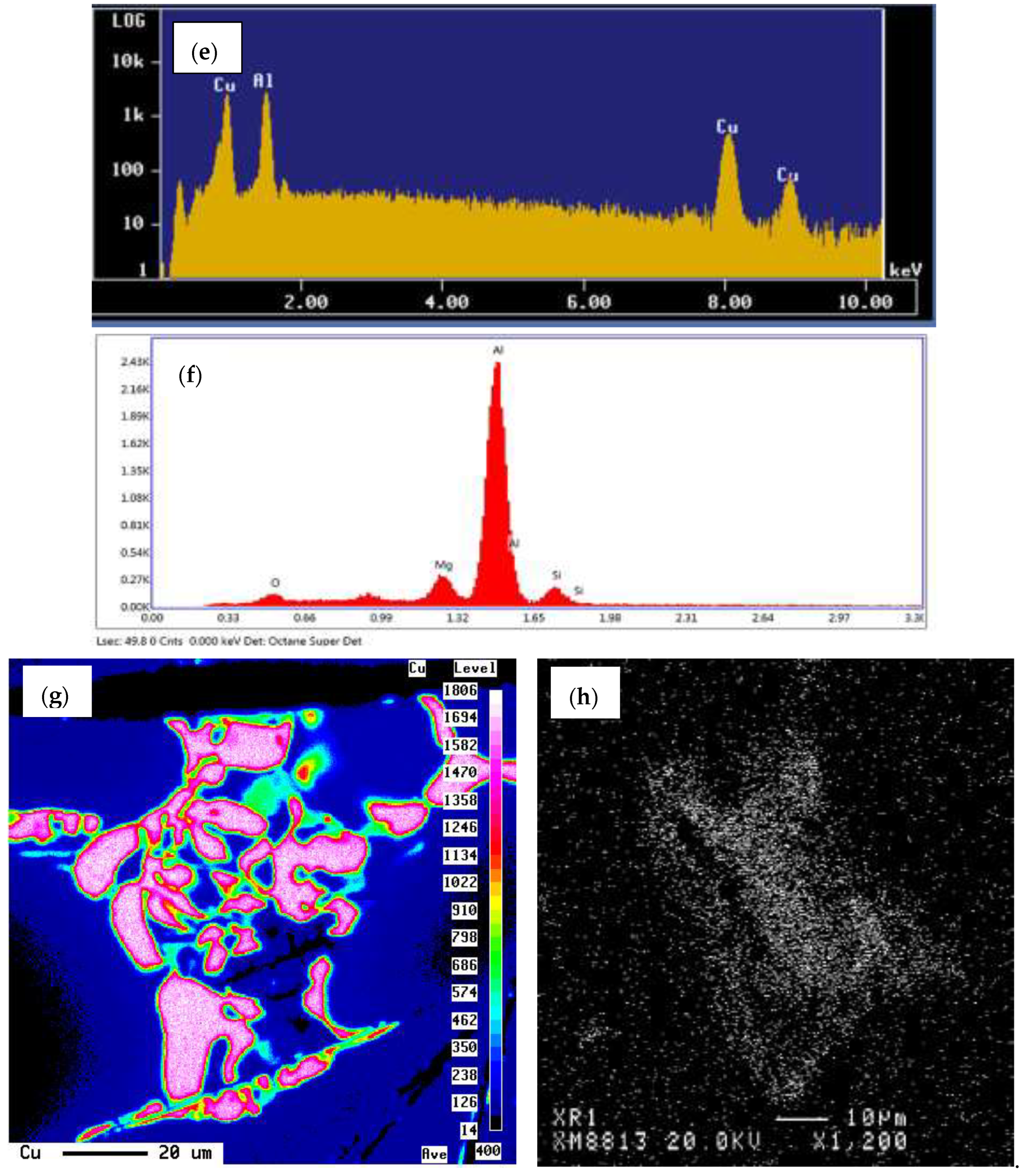

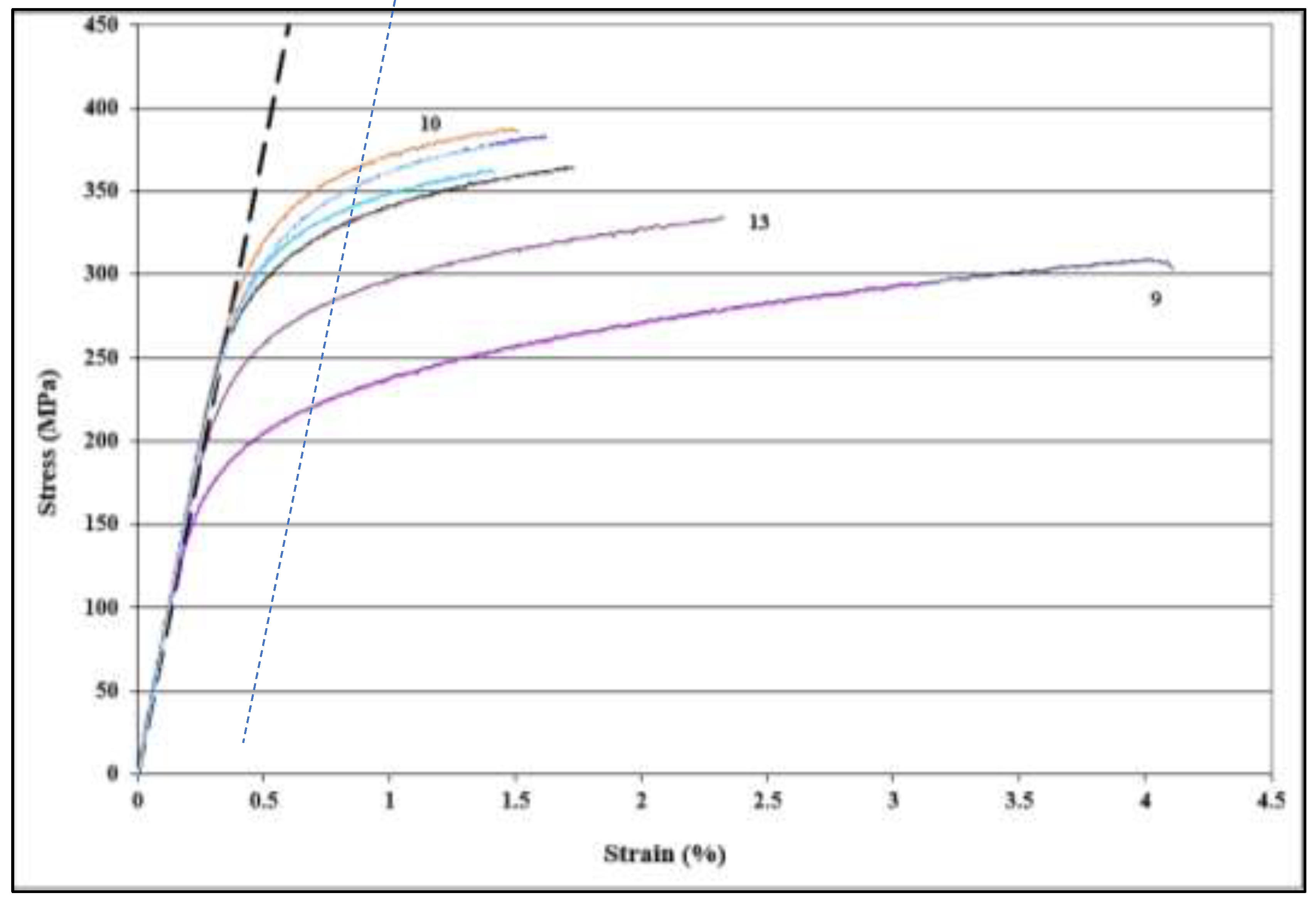
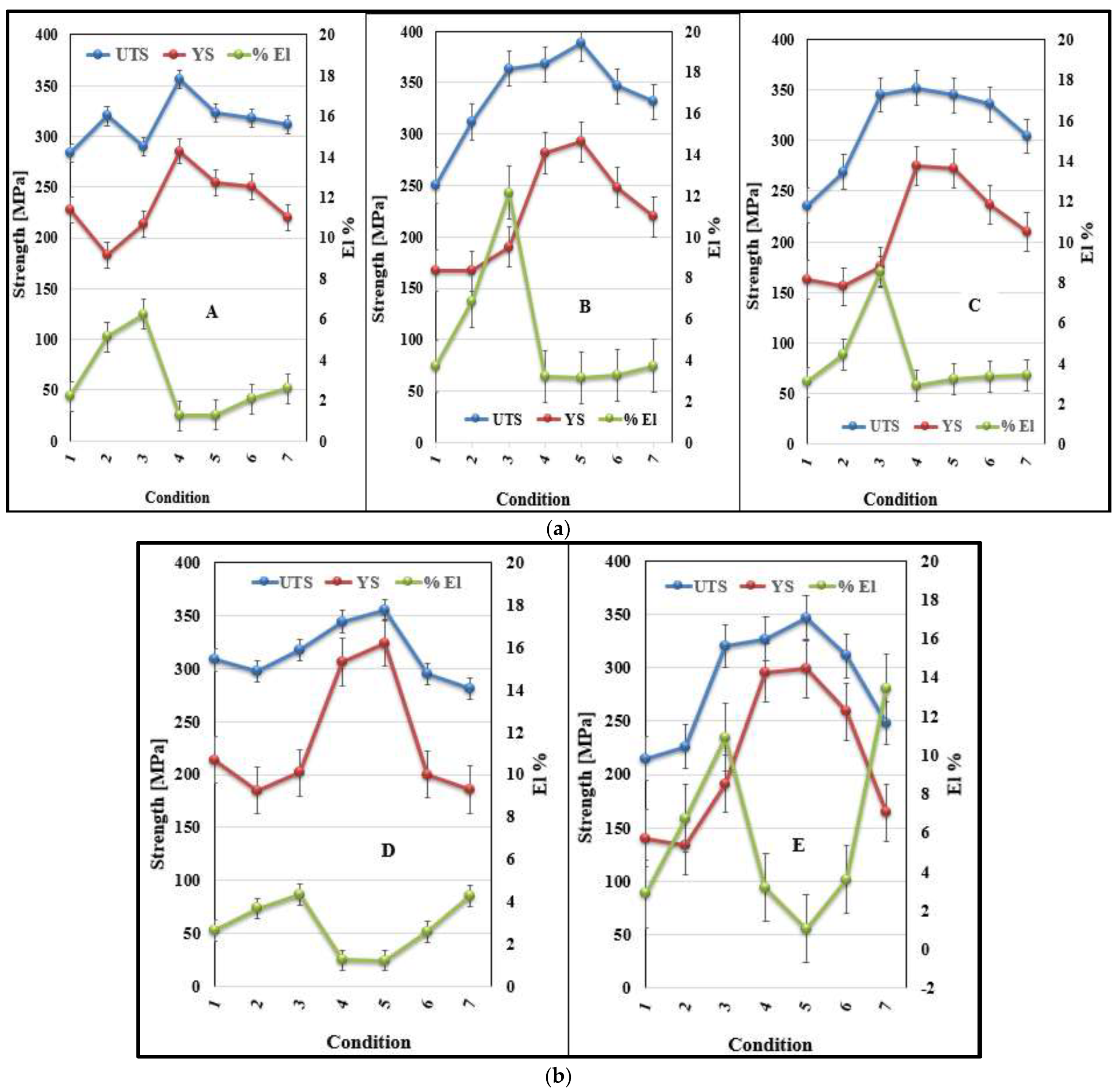
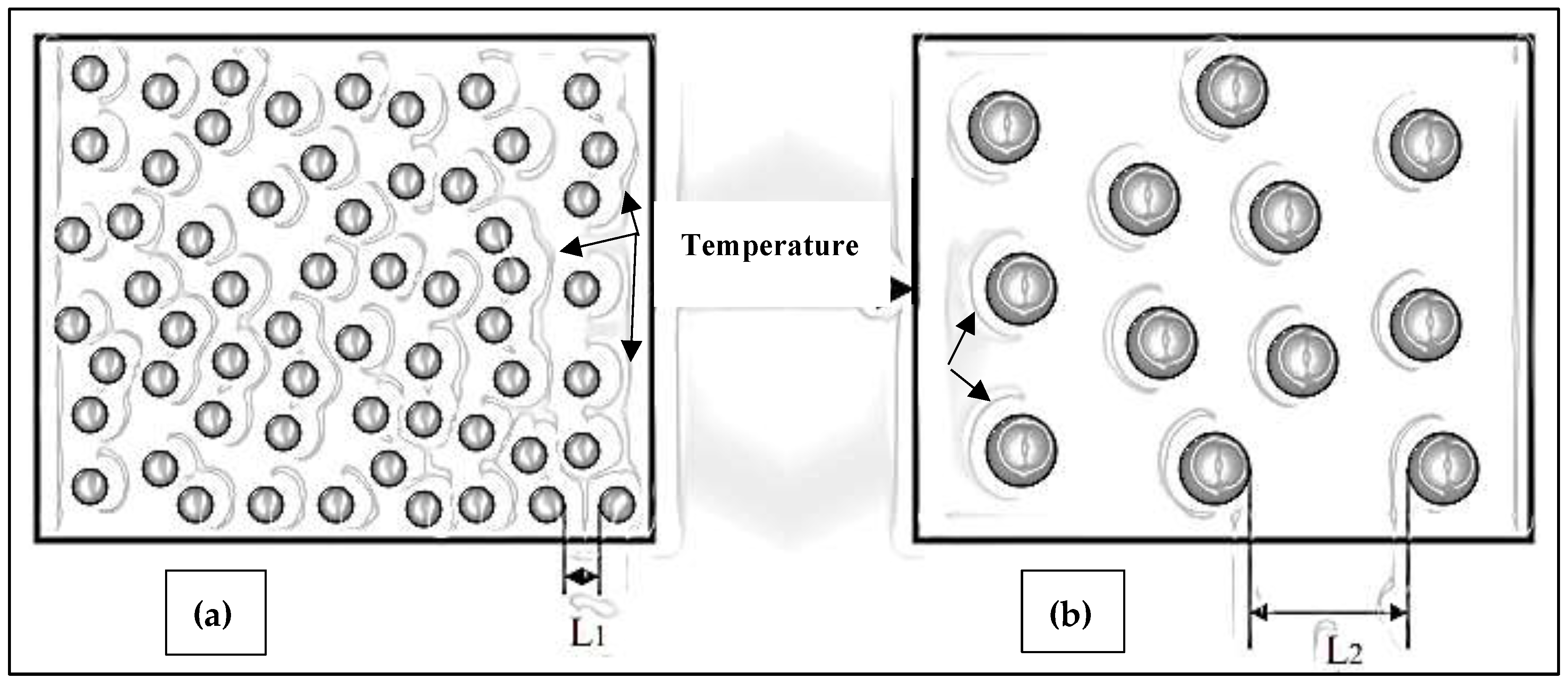




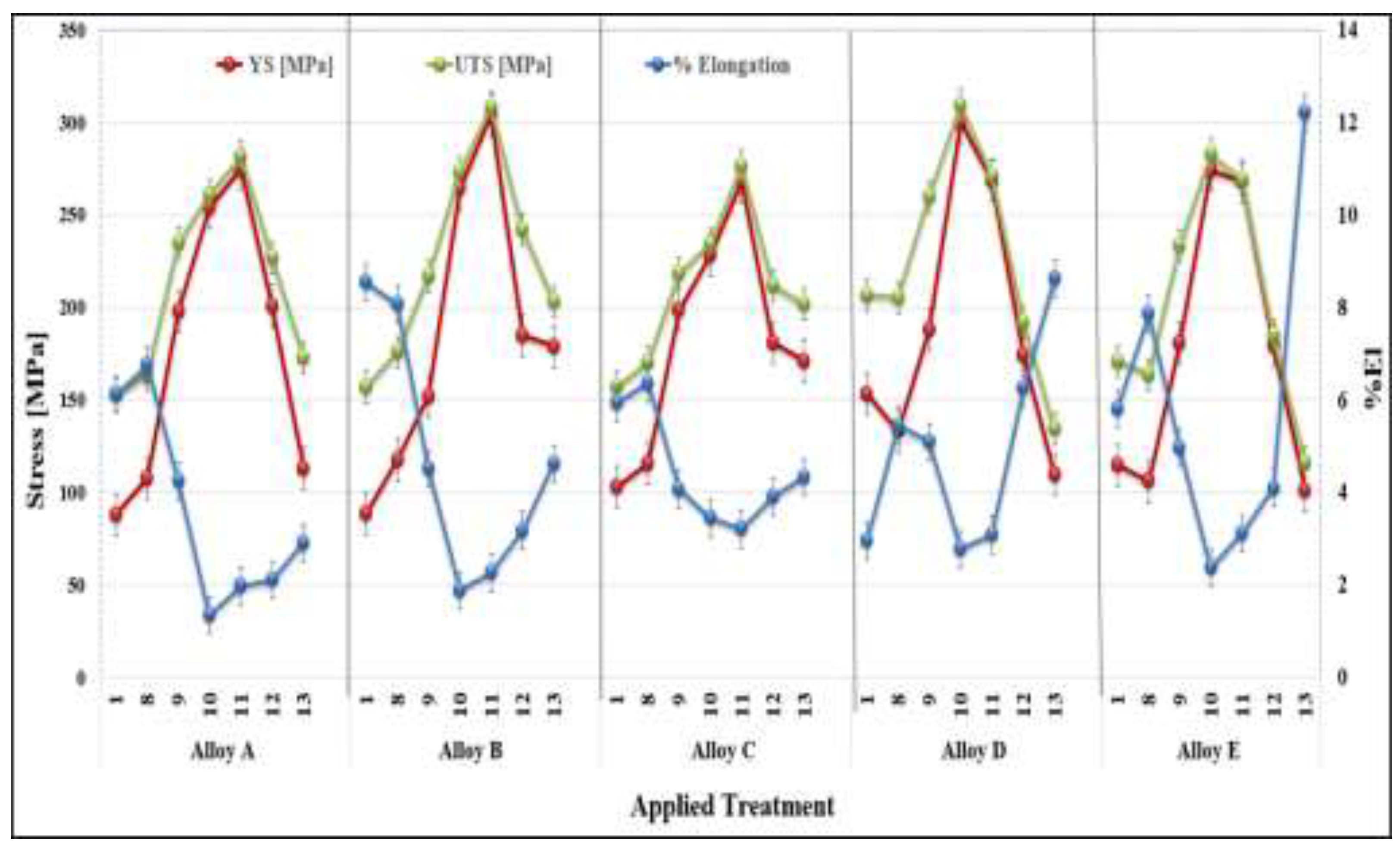
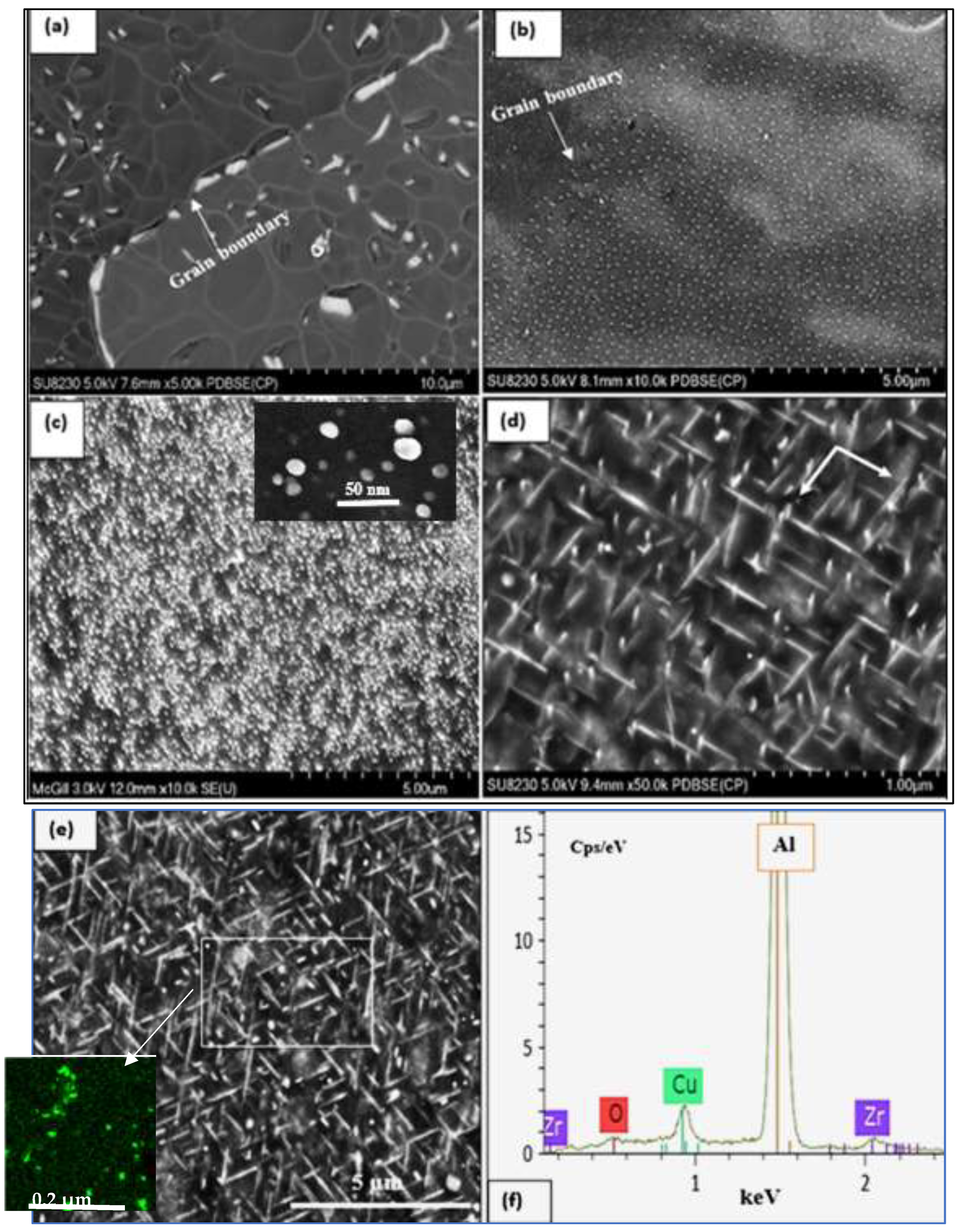
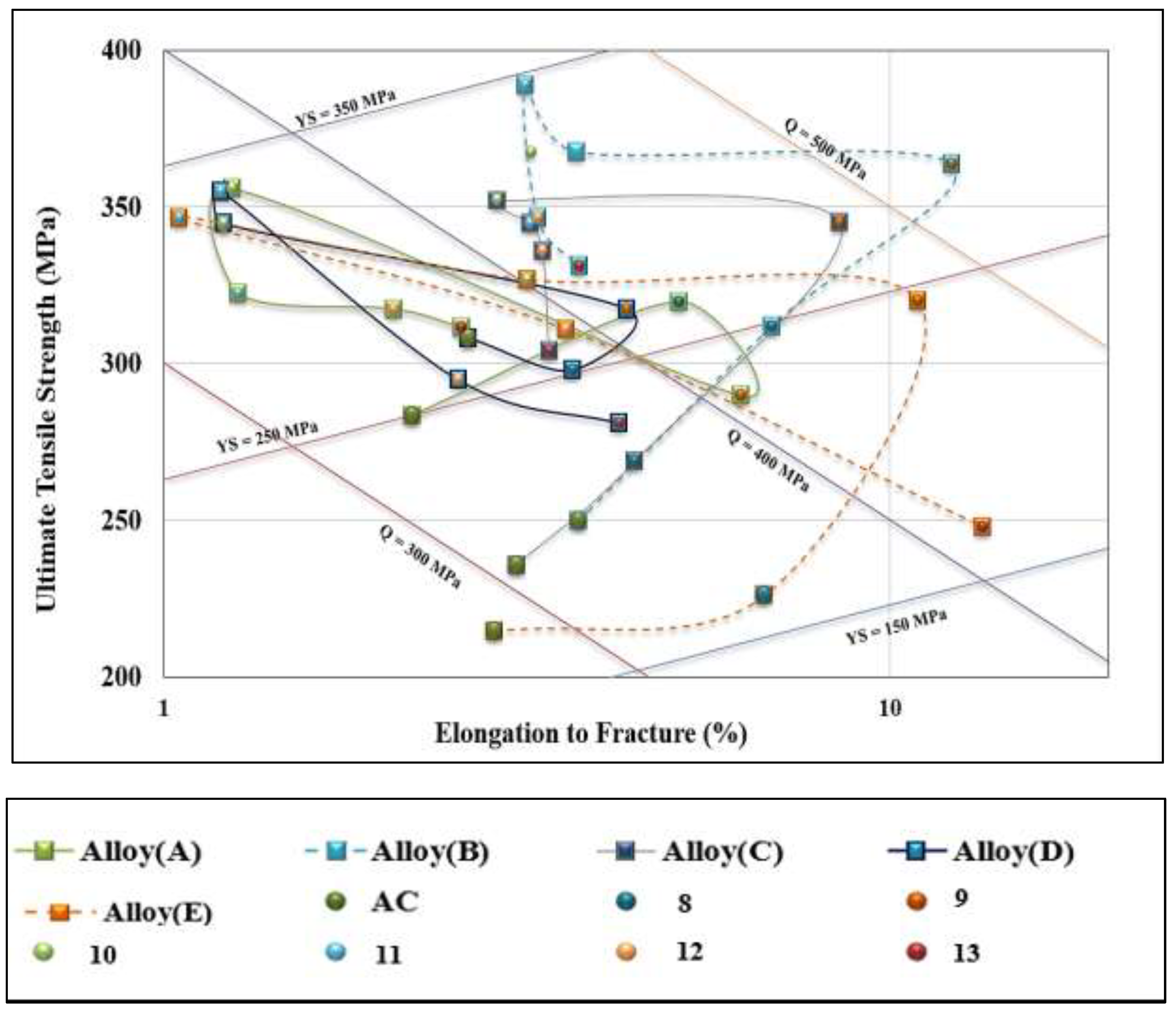
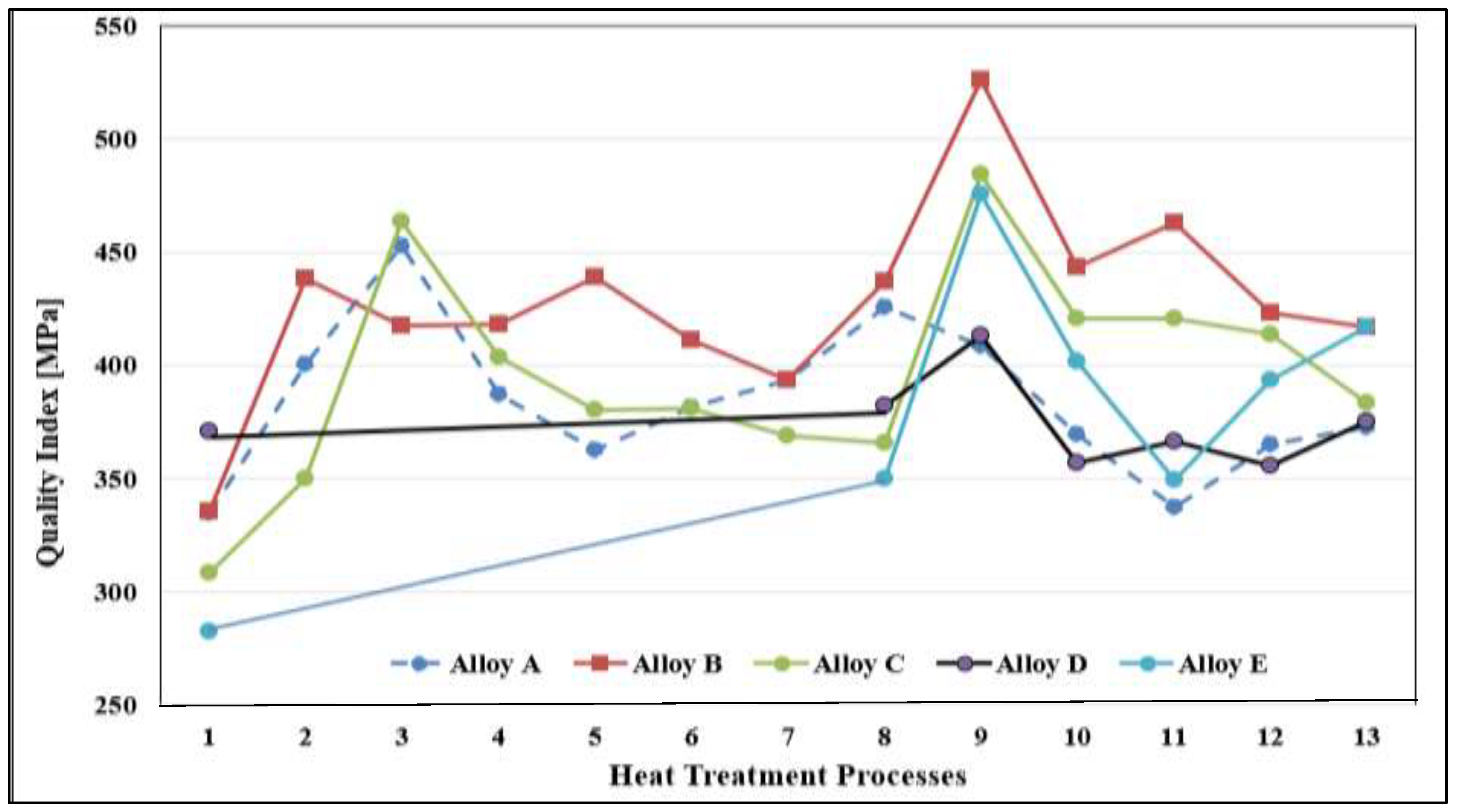
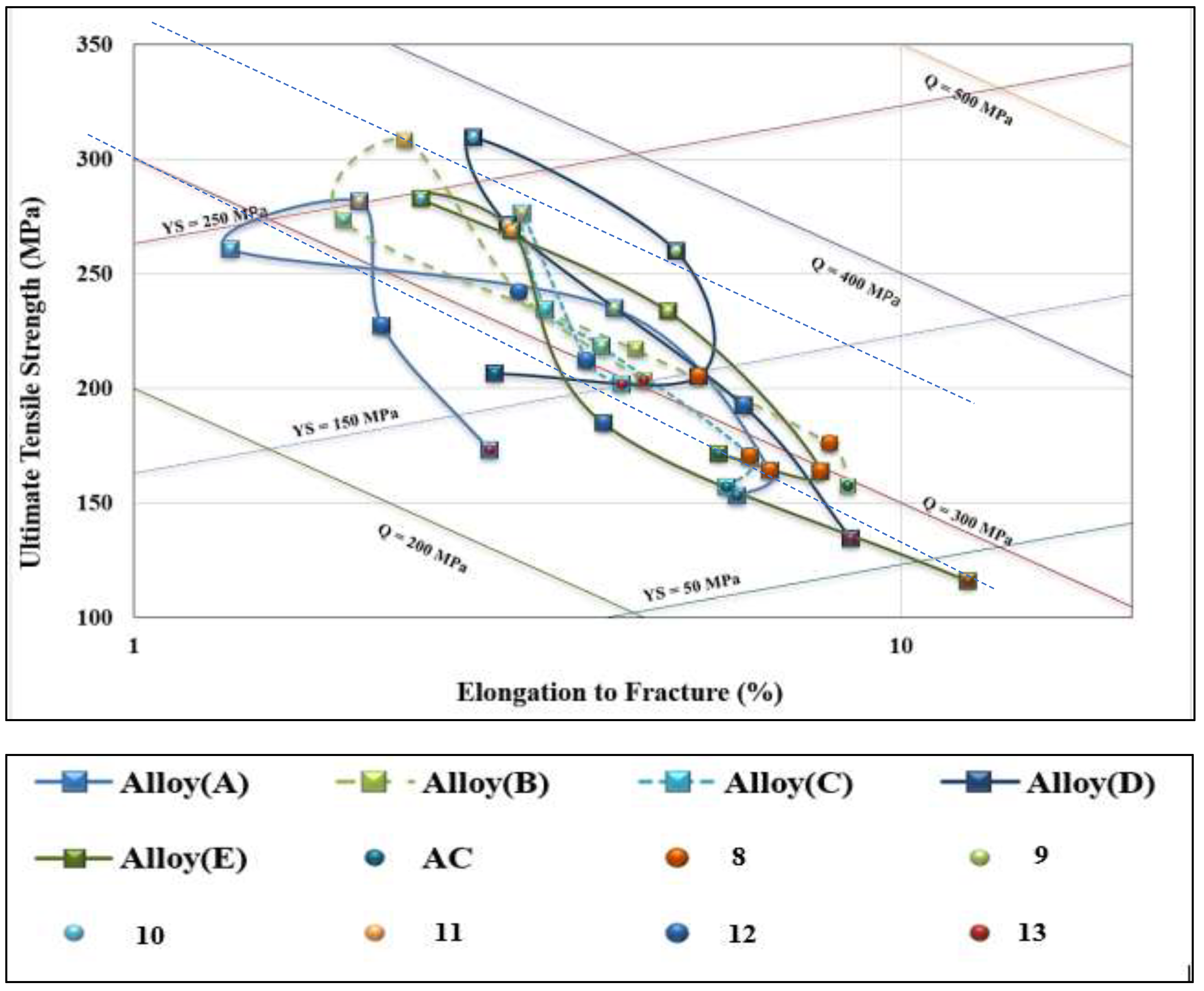
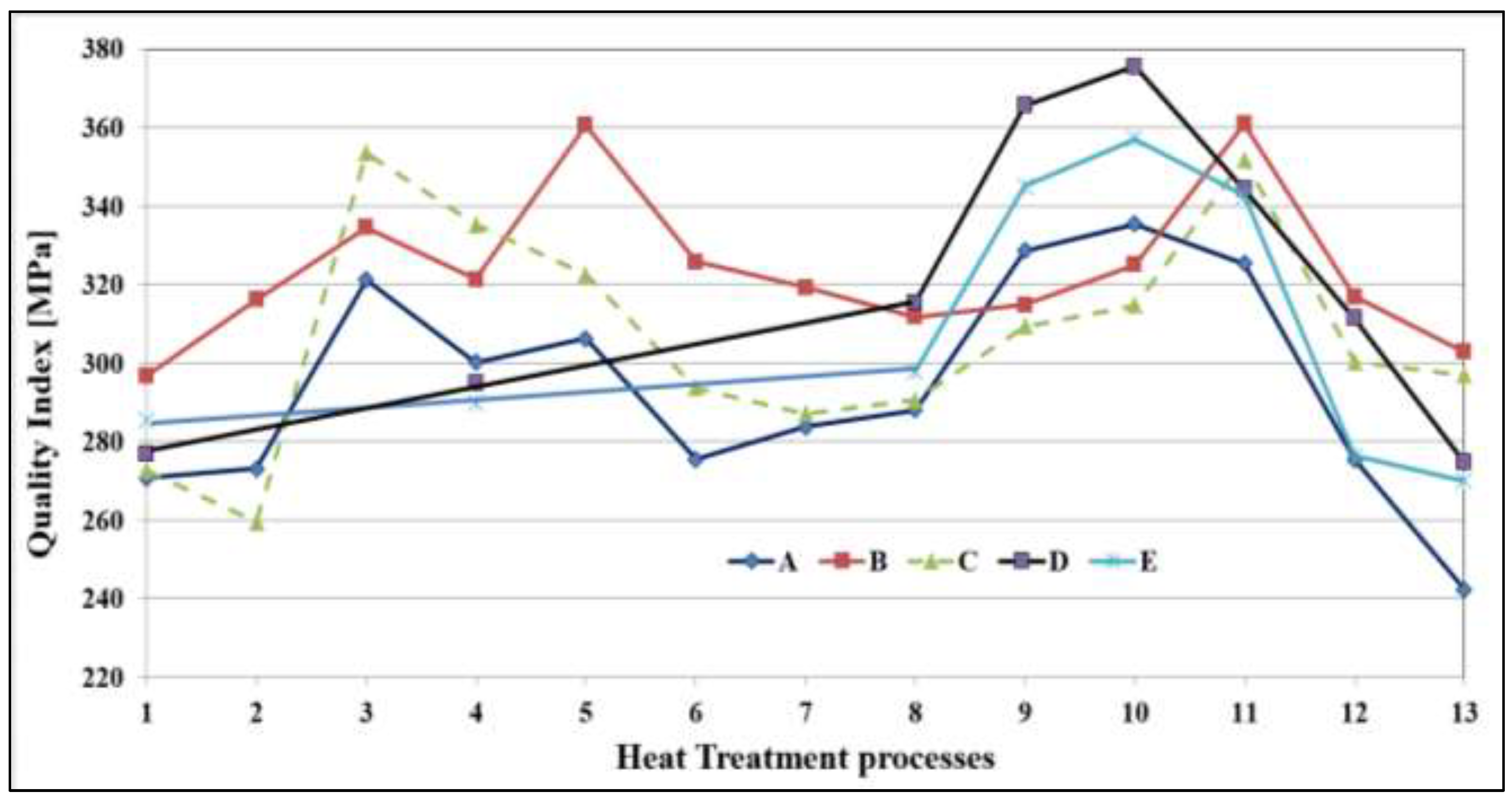
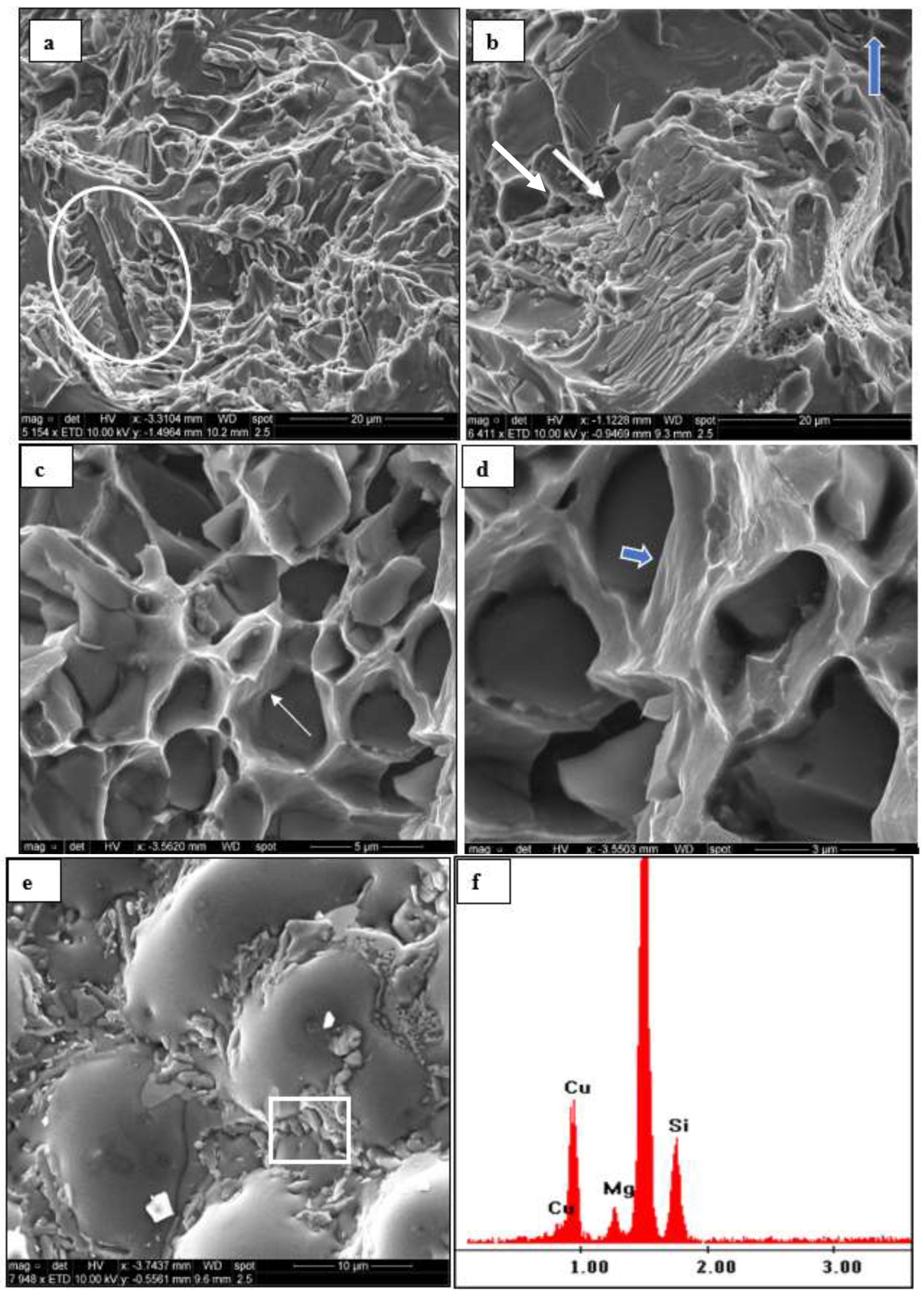
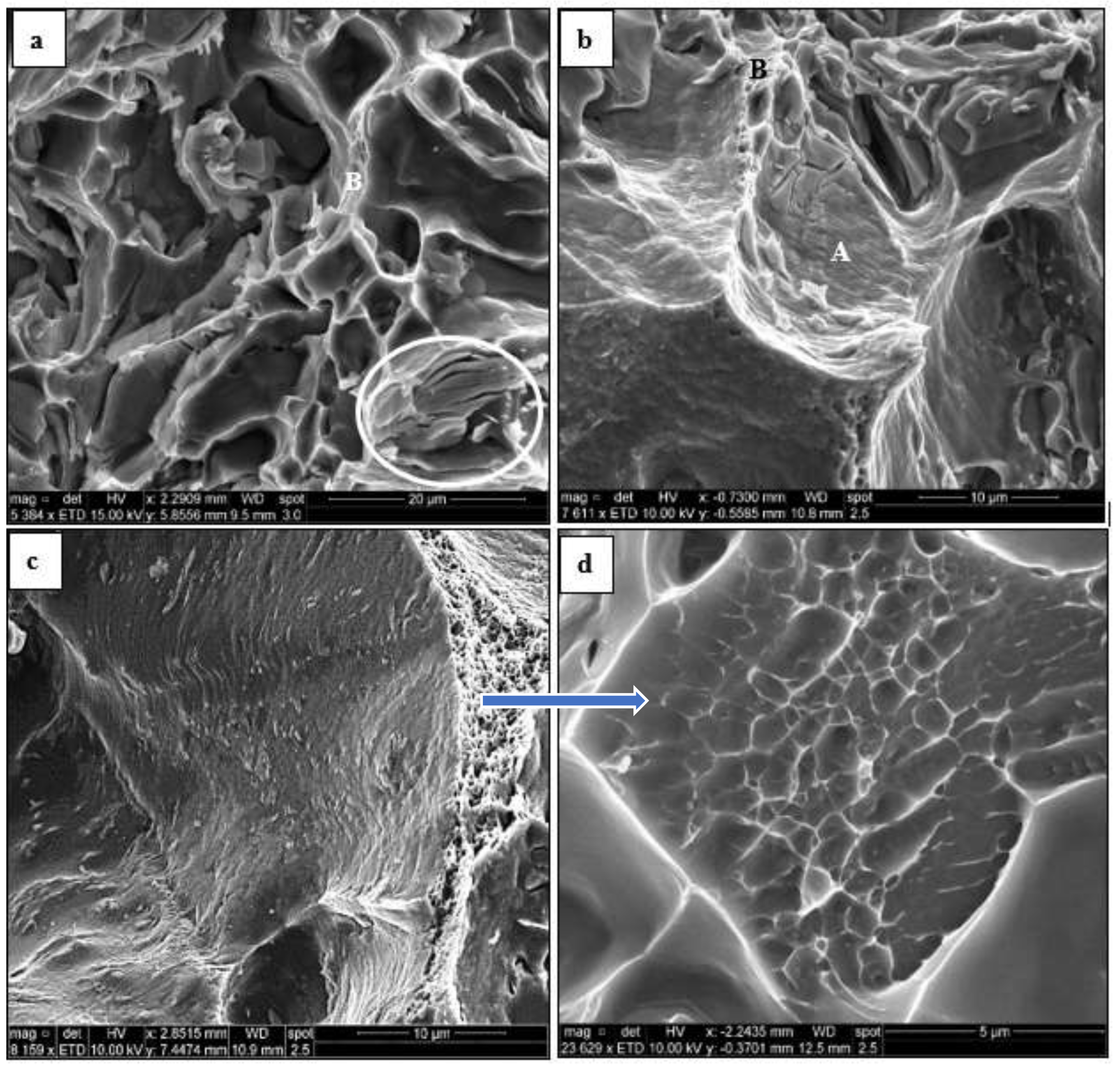
| Chemical Analysis (wt%) | |||||||||
|---|---|---|---|---|---|---|---|---|---|
| Alloy | Elements | ||||||||
| Cu | Si | Fe | Mn | Mg | Ti | Zr | V | Al | |
| T200 | 6.5 | 0.054 | 0.05 | 0.453 | 0.006 | 0.09 | 0.18 | 0.01 | Balance |
| B319 | 3.32 | 7.97 | 0.418 | 0.245 | 0.266 | 0.131 | - | - | Balance |
| A356 | 0.12 | 7.19 | 0.12 | - | 0.32 | 0.12 | - | - | Balance |
| Alloy Code | Composition |
|---|---|
| Alloy A | T200 |
| Alloy B | T200 +0.15% Ti |
| Alloy C | T200 +0.15% Ti + 0.5%Ag |
| Alloy D | A319 + 0.15%Ti + 200 ppm Sr (0.02%) |
| Alloy E | A356 + 0.15%Ti + 200 ppm Sr (0.02%) |
| Heat Treatment Number | Heat Treatment Details |
|---|---|
| 1 | As cast |
| 2 | SHT for 4 h/air quenching |
| 3 | SHT for 4 h/water quenching |
| 4 | SHT for 4 h/water quenching + aging 1 (4 h @ 180 °C) |
| 5 | SHT for 4 h/water quenching + aging 2 (4 h @ 200 °C) |
| 6 | SHT for 4 h/water quenching +aging 3 (4 h @ 250 °C) |
| 7 | SHT for 4 h/water quenching + aging 4 (100 h @ 250 °C) |
| 8 | SHT for 8 h/air quenching |
| 9 | SHT for 8 h/water quenching |
| 10 | SHT for 8 h/water quenching + aging 1 (4 h @ 180 °C) |
| 11 | SHT for 8 h/water quenching + aging 2 (4 h @ 200 °C) |
| 12 | SHT for 8 h/water quenching + aging 3 (4 h @ 250 °C) |
| 13 | SHT for 8 h/water quenching + aging 4 (100 h @ 250 °C) |
| Condition | UTS [MPa] | YS [MPa] | % El [%] |
|---|---|---|---|
| As-cast | 283.5 | 227.3 | 2.2 |
| Alloy Code | UTS [MPa] | YS [MPa] | % Elongation |
|---|---|---|---|
| A | 281 | 275 | 1.95 |
| B | 307 | 294 | 2.26 |
| C | 275 | 262 | 3.2 |
| D | 309 | 285 | 2.8 |
| E | 282 | 271 | 2.4 |
| Alloy Code | Heat Treatment Code | Q (MPa) | PYS (MPa) |
|---|---|---|---|
| A | 2 | 453 | 306 |
| B | 11 | 440 | 360 |
| C | 3 | 463 | 311 |
| D | 8 | 410 | 290 |
| E | 10 | 400 | 309 |
Disclaimer/Publisher’s Note: The statements, opinions and data contained in all publications are solely those of the individual author(s) and contributor(s) and not of MDPI and/or the editor(s). MDPI and/or the editor(s) disclaim responsibility for any injury to people or property resulting from any ideas, methods, instructions or products referred to in the content. |
© 2023 by the authors. Licensee MDPI, Basel, Switzerland. This article is an open access article distributed under the terms and conditions of the Creative Commons Attribution (CC BY) license (https://creativecommons.org/licenses/by/4.0/).
Share and Cite
Girgis, A.; Samuel, E.; Samuel, A.M.; Songmene, V.; Samuel, F.H. Effect of Cu Content on the Alloy Tensile Properties of Al-Cu Based Alloys Tested at 25 °C and 250 °C: Application of the Concept of Quality Index. Materials 2023, 16, 1400. https://doi.org/10.3390/ma16041400
Girgis A, Samuel E, Samuel AM, Songmene V, Samuel FH. Effect of Cu Content on the Alloy Tensile Properties of Al-Cu Based Alloys Tested at 25 °C and 250 °C: Application of the Concept of Quality Index. Materials. 2023; 16(4):1400. https://doi.org/10.3390/ma16041400
Chicago/Turabian StyleGirgis, Abram, Ehab Samuel, Agnes M. Samuel, Victor Songmene, and Fawzy H. Samuel. 2023. "Effect of Cu Content on the Alloy Tensile Properties of Al-Cu Based Alloys Tested at 25 °C and 250 °C: Application of the Concept of Quality Index" Materials 16, no. 4: 1400. https://doi.org/10.3390/ma16041400
APA StyleGirgis, A., Samuel, E., Samuel, A. M., Songmene, V., & Samuel, F. H. (2023). Effect of Cu Content on the Alloy Tensile Properties of Al-Cu Based Alloys Tested at 25 °C and 250 °C: Application of the Concept of Quality Index. Materials, 16(4), 1400. https://doi.org/10.3390/ma16041400








